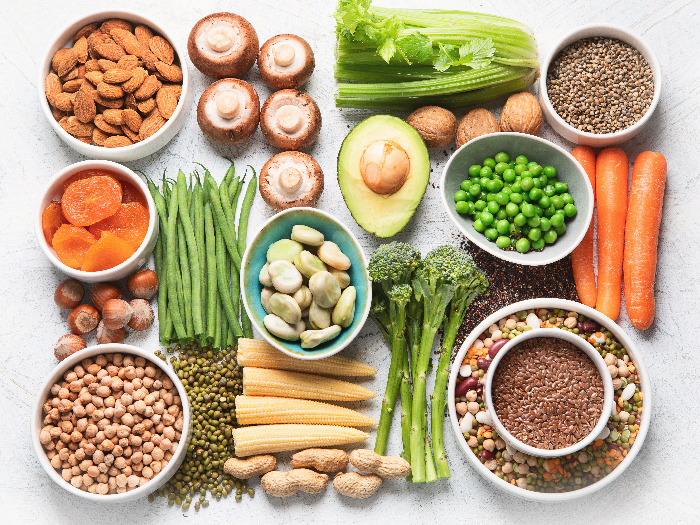A low-fiber diet is characterized by a reduction in fruits, vegetables, and grains, the primary sources of fiber in a human diet.
What is a Low-Fiber Diet?
A low-fiber diet eliminates or notably reduces the type and amount of vegetables, fruits, and grains that you consume, as these are the elements of the diet that contain fiber. Fiber is the part of food that remains undigested by the body but still passes through the intestines. Most of the time, fiber is needed to help add bulk to foods and stimulate bowel movements, but a doctor may recommend a low-fiber diet for a number of reasons. If you are going to have bowel surgery or colonoscopy, a doctor may request that you reduce your fiber intake in the days leading up to the procedure. [1]
Furthermore, if you have ulcerative colitis or irritable bowel syndrome, a high-fiber diet could increase inflammation and worsen the symptoms, as advised in this article from the Expert Review of Gastroenterology and Hematology. By reducing the amount of stool you produce and giving the intestines a break, a low-fiber diet is useful in a number of situations. This diet is not considered healthy for the long term, nor is it recommended for weight loss. It should only be used for short-term, specific scenarios or as a result of chronic disease. [2] [3]

A low-fiber diet eliminates or reduces the type and amount of vegetables, fruits, and grains that you consume. Photo Credit: Shutterstock
What to Eat?
If you are going to adopt a low-fiber diet, be forewarned that it is quite limiting, as there is fiber in many of the foods you commonly consume. However, there are also plenty of food options that don’t contain fiber, though your diet may feel strange for a while. The main types of food you should eat include protein, soft foods, dairy products, and low-fiber fruits and vegetables.
- Proteins: Fish, poultry, tender meat, tofu, eggs
- Soft foods: White pasta, white bread, pancakes, low-fiber hot cereals
- Dairy products: Milk, cheese, sour cream, cottage cheese, yogurt (low-fiber), butter, margarine
- Low-fiber fruits: Canned fruit, banana, papaya, plum, peach, watermelon, cantaloupe and fruit juice (no pulp)
- Low-fiber vegetables: Canned and well-cooked vegetables, without the skin, including white potatoes, beets, pureed spinach, tomato sauce, string beans, vegetable juices (strained).
Meal Plan
- Breakfast: Cheesy scrambled eggs, banana with creamy peanut butter and a slice of white toast
- Lunch: Tuna salad sandwich, beet salad, and a glass of strained vegetable juice, cottage cheese, and canned pears
- Dinner: White pasta with tomato sauce and pulled chicken, side of canned peaches
- Snack: Saltine crackers and cubed cheese
What to Avoid?
Following a low-fiber diet means eliminating many popular and nutrient-dense foods. It is important that you consider your other sources of nutrients while on a low-fiber diet to ensure that your body’s daily requirements are satisfied. As mentioned above, the main foods you need to avoid include high-fiber vegetables and fruits, as well as most grains, legumes, nuts, and seeds.
- High-fiber fruit: Prunes, berries, raisins, raw and dried fruit
- High-fiber vegetables: Raw vegetables, peas, squash, broccoli, cabbage, corn, cauliflower, and sauerkraut
- Grains: Whole-grain cereal, whole wheat bread, potatoes with skin, brown rice, coconut, bran, granola, and cornbread
- Legumes, nuts, seeds, other: Baked beans, lentils, all nuts and seeds, popcorn, olives, pickles, and relish
Risks
As mentioned above, a low-fiber diet is not recommended for extended periods of time, as it can be difficult to get all of your essential nutrients. For a short period of time, and for a specific medical reason, a low-fiber diet can be appropriate and manageable. If you have a chronic disease that requires you to maintain a low-fiber diet, it is important to speak with a nutritionist and carefully manage your diet to stay healthy. Remember, fiber isn’t just about staying regular; it can also help boost heart health and help manage blood sugar levels in the body. It is a critical part of a healthy diet, and not something you should actively avoid unless you have to. If you are trying to lose weight or simply decrease your carb intake, there are other diets out there that can accomplish those goals in a healthier and more sustainable way! [4] [5]
